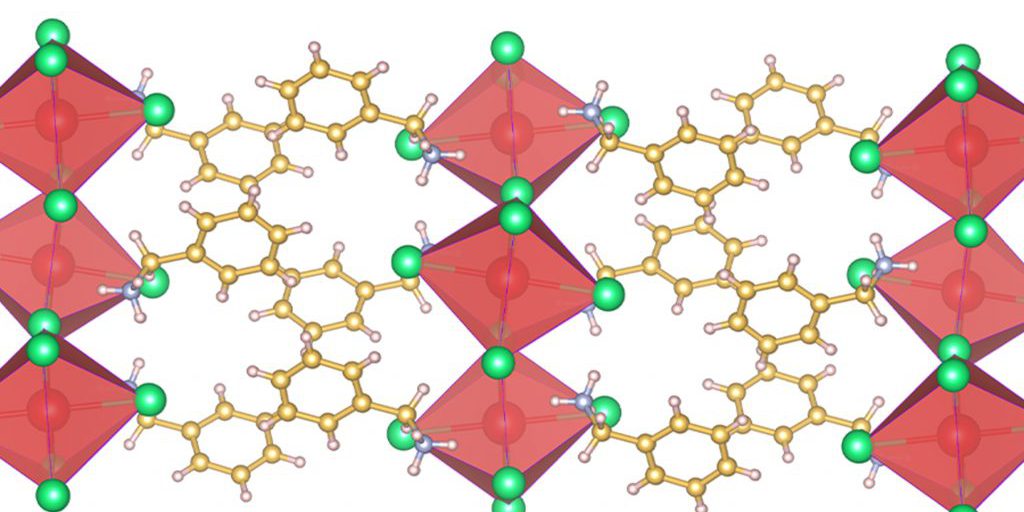Perovskite materials are low-cost, solution-processable semiconductors that can absorb and convert solar energy with extraordinarily high efficiencies, making them promising material for use in applications such as photovoltaic solar cells – if the material can be made stable and efficient. In research published in the journal Chem, Los Alamos National Laboratory researchers have examined the performance properties of two-dimensional perovskites in conditions representative of a device structure, finding those structures can be as efficient as their three-dimensional counterparts.
“We discovered that intrinsic to this material, there are some shallow defects or ‘trap states’ that can help the charge transport over a long distance,” said Wanyi Nie, a researcher with the Center for Integrated Nanotechnologies group at Los Alamos National Laboratory. “The travel distance is slightly lower than three-dimensional perovskites but is much greater than what people believed in a typical 2D quantum-confined system. So this is a critical finding that two-dimensional perovskites can be efficient as three-dimensional perovskites.”


